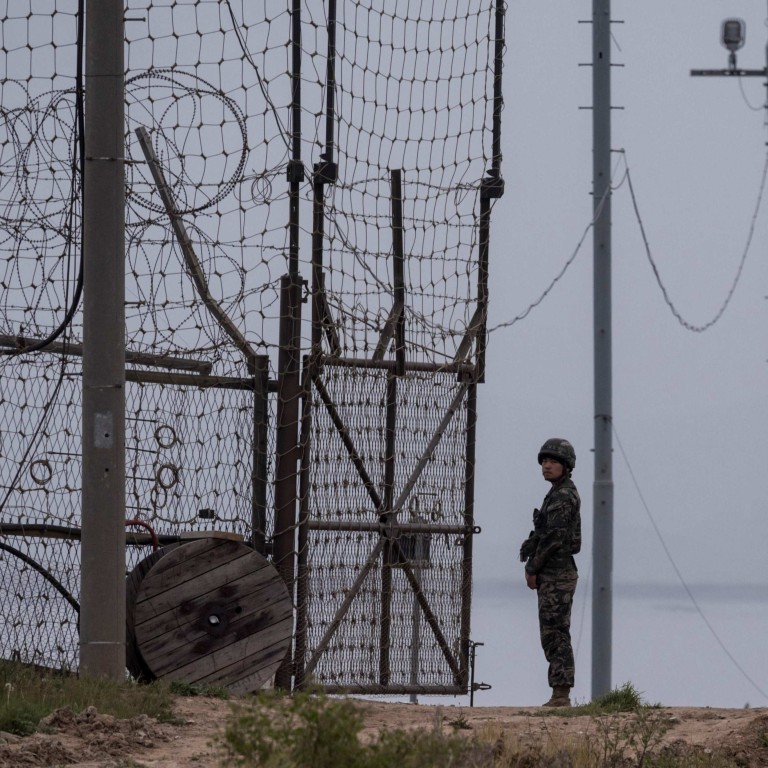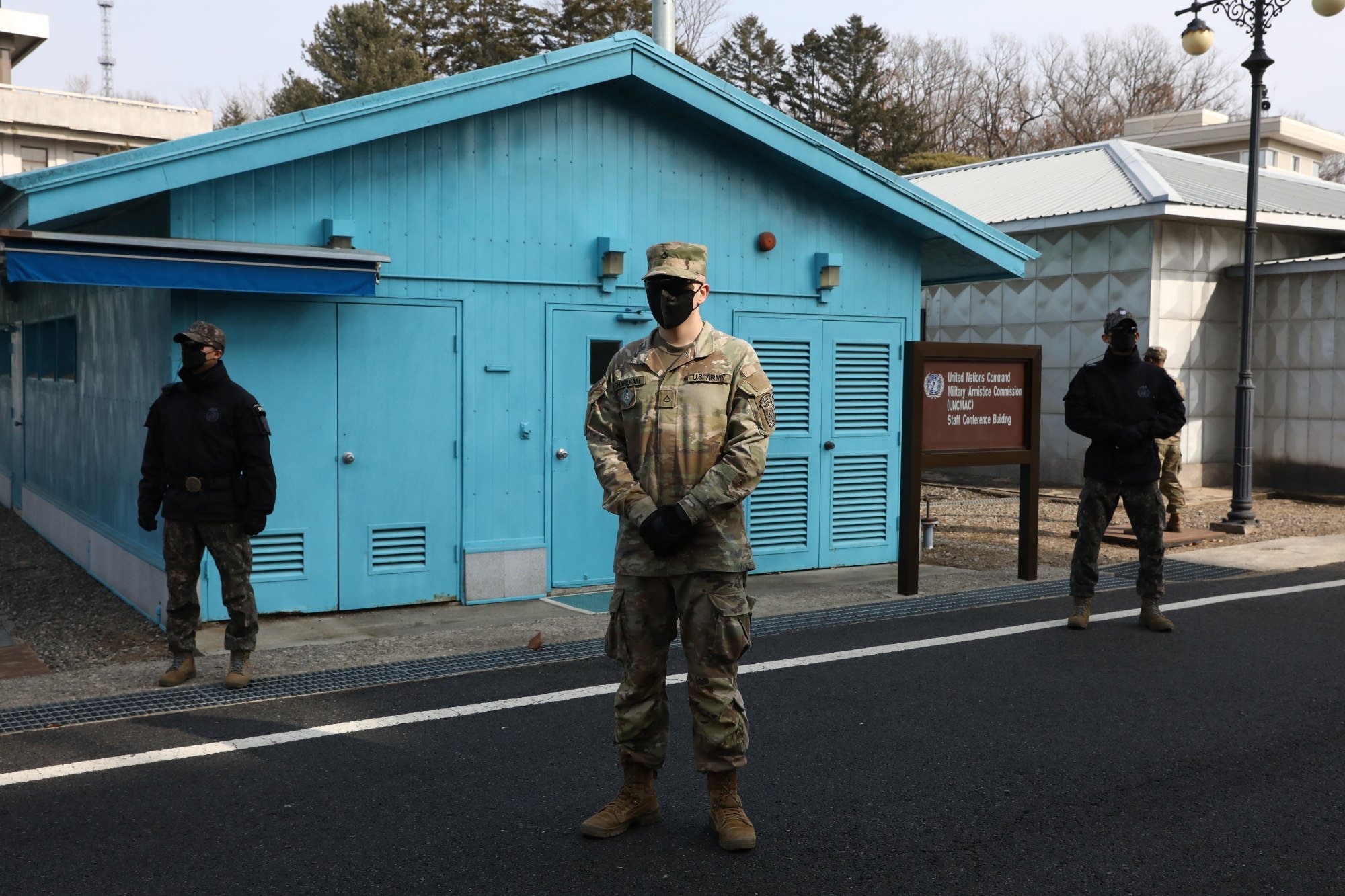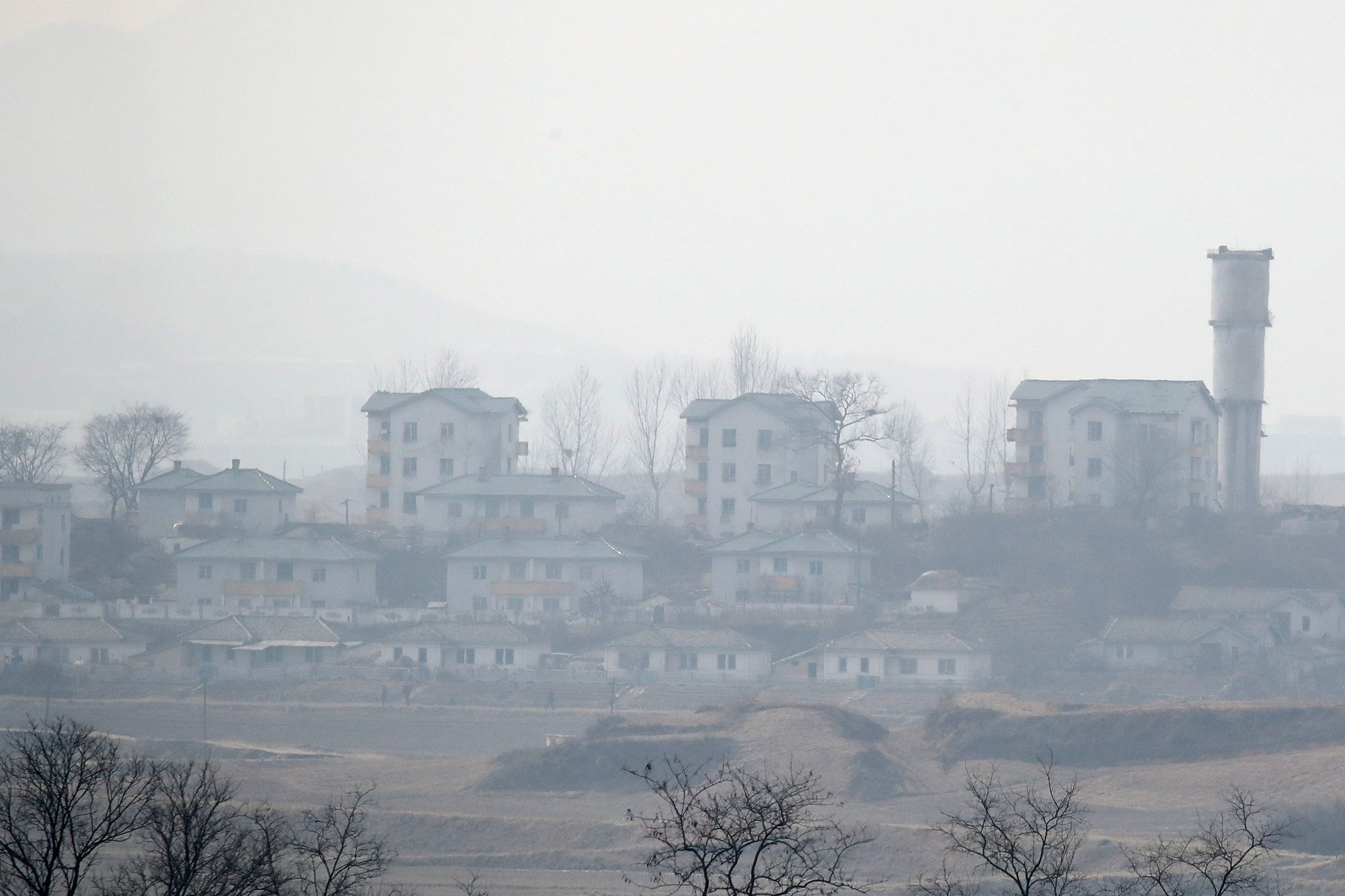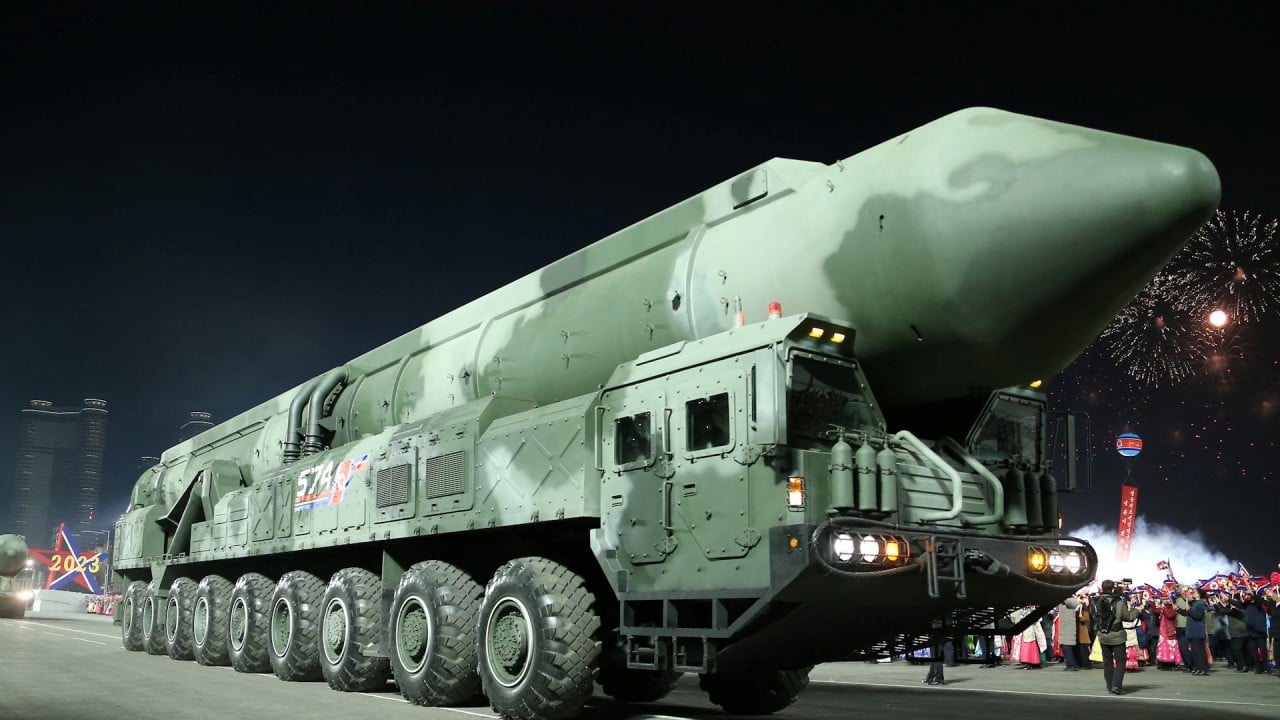
North and South Korea remain as divided as ever, 70 years after truce
- North Korea’s communications with the South and the UN Command have dwindled in recent years, with Covid-19 further encouraging its retreat from in-person meetings
- It’s become harder to keep the peace and ‘reduce the chance of something untoward happening’, says a member of the UN Command Military Armistice Commission
On the Imjin River, which crosses the heavily guarded demilitarised zone (DMZ) – the buffer area between the two Koreas – layers of ice were visible, a neat metaphor for hostilities between the two sides which have been largely frozen for 70 years.
North Korean soldiers have become a rare sight since the global outbreak of Covid-19. To ward off the virus they have avoided showing up, to the extent of suspending regular in-person talks with the UN Command.
“They no longer meet with us face to face,” said Lieutenant Colonel Griff Hofman of the UN Command Military Armistice Commission.
“It’s all done via the hotline, and they generally stay in Panmungak,” he said, referring to the main building on the North Korean side of the area, also known as the Phanmun Pavilion. “If North Korean troops needed to go outdoors, they wore hazmat suits.”
Opinion: Why nuclear weapons should never be an option for South Korea
South Korean troops stationed in the Joint Security Area stared straight ahead on February 7 as usual, but there was no sign of their North Korean counterparts on their side of the heavily guarded zone.
However, the meetings eventually collapsed amid disagreements over demands for Pyongyang to denuclearise. By 2020, North Korea had severed hotlines with the South and in June that year blew up a joint liaison office in the North Korean border town of Kaesong.

On February 7, no villagers or troops were seen in the fields of North Korea’s Kijong-dong village in the DMZ, near a 70-metre South Korean tower fitted with cameras to observe the North’s military movements and other activities.
Known as the “propaganda village”, Kijong-dong merely keeps a pretence of civilian life under a 160-metre-tall tower flying the country’s flag.
The fog reduced visibility to a little more than 10km from the base of the South Korean tower, a few minutes’ walk from the conference huts.

Hofman said no in-person meetings in the conference huts had been held since officer talks between the UN Command and North Korea in 2018 to negotiate the return of 55 sets of remains from the North to the South. Tours in the Joint Security Area run by the North were suspended in 2020 to try to prevent Covid-19.
The UN Command has to rely on the 24/7 hotline on the South side of the Joint Security Area to pass messages to the North Korean army to prevent surprises.
“The more communication that we have, and [ability to] let them know what’s going on, we would vastly reduce the chance of something untoward happening,” said Hofman, adding that the area was intended for neutral dialogue to create opportunities to de-escalate tensions and prevent conflict.
Will US move to quash North Korean propaganda bring about a ‘revolution’?
Those who signed the Korean war armistice in July 1953 had no idea it would last so long. The agreement has brought 70 years of peace, albeit precarious, between the two sides with the DMZ and Military Demarcation Line as a de facto border.
The zone is off-limits to most South Koreans, other than those from the village of Daeseong-dong, who tend to a few rice paddies. Previously, they were residents there before the war. Labourers today are their descendants.
Rare cranes forage and feed in fields where, at this time of year, ice often forms in the furrows of the soil. In 70 years, the landmine-filled DMZ has become a wildlife sanctuary with little human disturbance.
“Our job is to make sure that hostilities don’t break out again so that we can continue to work towards a permanent peace on the Korean peninsula,” Hofman said. “I believe the 70th anniversary of the armistice is a very important commemoration of that.”


